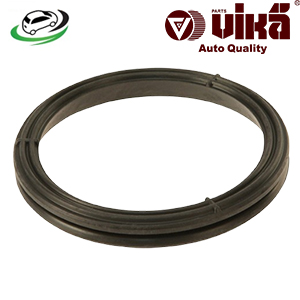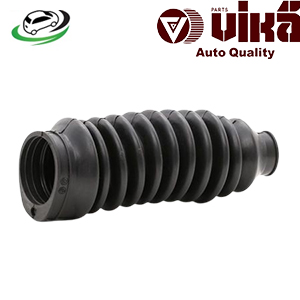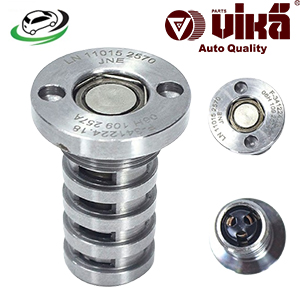-6%
Get Engine Variable Valve Timing Audi A3 8P 2.0T / VW CC/EOS/Golf V/Golf VI/Jetta VI/Passat B6 06H109257A
Variable Valve Timing (VVT) is a technology used in modern internal combustion engines to optimize engine performance, fuel efficiency, and emissions by adjusting the timing of the valve openings and closings. This system allows the engine to adapt to different driving conditions, improving power output, fuel economy, and reducing pollutants. This guide provides an in-depth look at VVT technology, its components, benefits, and how it works.
Understanding Variable Valve Timing
The Basics of Valve Timing
In a traditional internal combustion engine, the timing of the intake and exhaust valves is fixed. The camshaft, which operates the valves, is driven by the timing belt or chain. Fixed valve timing means that the engine operates under a specific set of conditions regardless of speed or load, which can limit performance and efficiency.
What is Variable Valve Timing?
Variable Valve Timing (VVT) refers to a system that alters the timing of the valve openings and closings based on engine speed, load, and other parameters. By adjusting when and how the valves open and close, VVT systems can enhance engine performance and efficiency under various driving conditions.
Components of a VVT System
- Camshaft:
- Variable Camshaft: In VVT systems, the camshaft can be adjusted to change the timing of valve operation. This adjustment is controlled by various mechanisms depending on the VVT system type.
- Camshaft Phasers: These are devices attached to the camshaft that can rotate it relative to the timing gear, adjusting the timing of the valve openings and closings.
- VVT Controller:
- Engine Control Unit (ECU): The ECU manages the VVT system by receiving inputs from various sensors and adjusting the camshaft timing accordingly.
- VVT Solenoid: The solenoid controls the flow of oil to the VVT mechanism, enabling or disabling the camshaft adjustments.
- Oil Control Valve (OCV):
- Hydraulic Actuation: Many VVT systems use hydraulic pressure to adjust camshaft timing. The OCV regulates the flow of oil to the camshaft phaser, allowing precise control of valve timing.
- Timing Chain/Belt:
- Adjustable Timing: In VVT systems, the timing chain or belt may have a mechanism to allow adjustments in timing based on the camshaft position.
- Sensors:
- Camshaft Position Sensor: This sensor monitors the position of the camshaft and provides data to the ECU to make timing adjustments.
- Crankshaft Position Sensor: Works in conjunction with the camshaft sensor to ensure accurate timing adjustments.
How Variable Valve Timing Works
- Basic Operation:
- Timing Adjustment: The VVT system adjusts the timing of the camshaft to optimize engine performance. This adjustment can be made to advance or retard the valve timing based on engine conditions.
- Engine Speed and Load: At low engine speeds, the system might advance the timing to improve low-end torque. At high speeds, it might retard the timing for better high-end power.
- Modes of Operation:
- Early Intake Valve Closure: At low speeds, the system may keep the intake valves open longer to improve fuel mixture and increase torque.
- Late Exhaust Valve Closure: At high speeds, the system may close the exhaust valves later to improve exhaust flow and increase power.
- Hydraulic Control:
- Oil Pressure: The system often uses hydraulic pressure to adjust the camshaft timing. The oil control valve regulates this pressure, allowing the camshaft phaser to rotate and change the timing.
- Electronic Control:
- ECU Commands: The ECU receives data from sensors and makes real-time adjustments to the VVT system. It ensures that the timing adjustments are made precisely for optimal performance and efficiency.
Benefits of Variable Valve Timing
- Improved Engine Performance:
- Enhanced Power Output: By optimizing valve timing, VVT systems can improve power output across a range of engine speeds, providing better acceleration and performance.
- Better Low-End Torque: VVT can enhance low-end torque, making the vehicle more responsive and easier to drive at lower speeds.
- Increased Fuel Efficiency:
- Optimized Combustion: VVT systems adjust the valve timing to achieve the optimal air-fuel mixture, improving combustion efficiency and reducing fuel consumption.
- Adaptive Efficiency: The system adapts to different driving conditions, ensuring that the engine operates efficiently regardless of speed or load.
- Reduced Emissions:
- Cleaner Exhaust: By improving combustion and optimizing the air-fuel mixture, VVT systems help reduce harmful emissions such as nitrogen oxides (NOx) and hydrocarbons (HC).
- Environmental Compliance: Enhanced emission control helps the vehicle meet environmental regulations and standards.
- Enhanced Engine Longevity:
- Reduced Wear: By optimizing valve timing, VVT systems can reduce engine wear and tear, leading to a longer engine lifespan.
- Lower Operating Temperatures: Efficient combustion and improved performance can help maintain lower operating temperatures, reducing the risk of overheating.
Types of Variable Valve Timing Systems
- VTEC (Variable Valve Timing and Lift Electronic Control):
- Honda Technology: Developed by Honda, VTEC combines variable valve timing with variable valve lift. It uses multiple camshaft profiles to provide different performance characteristics at various engine speeds.
- VVT-i (Variable Valve Timing with intelligence):
- Toyota Technology: VVT-i, developed by Toyota, adjusts the camshaft timing based on engine speed and load. It includes a mechanism for continuously variable timing adjustments, offering a balance between performance and efficiency.
- Variable Valve Timing (VVT) Systems:
- General Systems: Many manufacturers use their proprietary VVT systems, which may involve different mechanisms for adjusting camshaft timing. These systems typically use hydraulic or electronic control to achieve the desired timing adjustments.
- Dual VVT-i:
- Toyota Technology: Dual VVT-i adjusts the timing of both the intake and exhaust valves independently. This allows for more precise control of valve timing and better overall engine performance.
Common Issues and Troubleshooting
- VVT System Failure:
- Symptoms: Common symptoms of a failing VVT system include poor engine performance, reduced fuel efficiency, increased emissions, and unusual engine noises.
- Diagnosis: Diagnostic trouble codes (DTCs) related to the VVT system can be retrieved using an OBD-II scanner. Inspecting the VVT solenoid, camshaft phaser, and oil control valve may also help identify the issue.
- Oil Flow Problems:
- Low Oil Pressure: Insufficient oil pressure can affect the operation of the VVT system. Checking the oil level and pressure is crucial for ensuring proper system function.
- Contaminated Oil: Contaminated or dirty oil can cause issues with the VVT system. Regular oil changes and maintenance help prevent such problems.
- Sensor Issues:
- Faulty Sensors: Malfunctioning camshaft or crankshaft position sensors can lead to incorrect timing adjustments. Replacing faulty sensors may resolve VVT system issues.
- Timing Chain/Belt Problems:
- Misalignment: Issues with the timing chain or belt can affect the VVT system’s performance. Ensuring proper alignment and tension is important for the system’s operation.
Maintenance and Care
- Regular Oil Changes:
- Clean Oil: Regularly changing the engine oil helps maintain clean oil, which is essential for the proper functioning of the VVT system.
- Proper Oil Type: Use the recommended oil type and grade specified by the manufacturer to ensure optimal performance.
- Inspect VVT Components:
- Routine Checks: Periodically inspect the VVT system components, such as the camshaft phaser, solenoid, and oil control valve, for signs of wear or damage.
- Address Issues Promptly: If any issues are detected, address them promptly to avoid further damage to the engine.
- Follow Manufacturer Recommendations:
- Service Intervals: Adhere to the manufacturer’s recommended service intervals for VVT system components and related parts.
- Use OEM Parts: When replacing VVT system components, use original equipment manufacturer (OEM) parts or high-quality aftermarket equivalents.
Follow us on Facebook for more parts.



